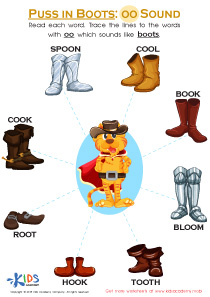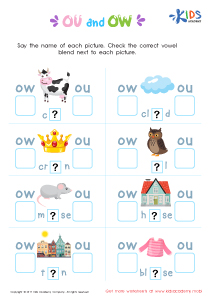Reading comprehension Normal Vowel Blends Worksheets for Ages 3-8
7 filtered results
-
From - To
Enhance your child's reading skills with our engaging Normal Vowel Blends Worksheets, specially designed for ages 3-8. These interactive worksheets focus on reading comprehension through the introduction of vowel blends, helping young learners recognize and pronounce blended sounds effortlessly. Each worksheet is carefully crafted to combine fun activities and essential reading practice, allowing children to improve their phonics, vocabulary, and comprehension. Ideal for homeschooling or classroom learning, these resources encourage critical thinking and foster a love for reading. Explore our collection today and watch your child flourish as they develop confidence in their reading abilities!
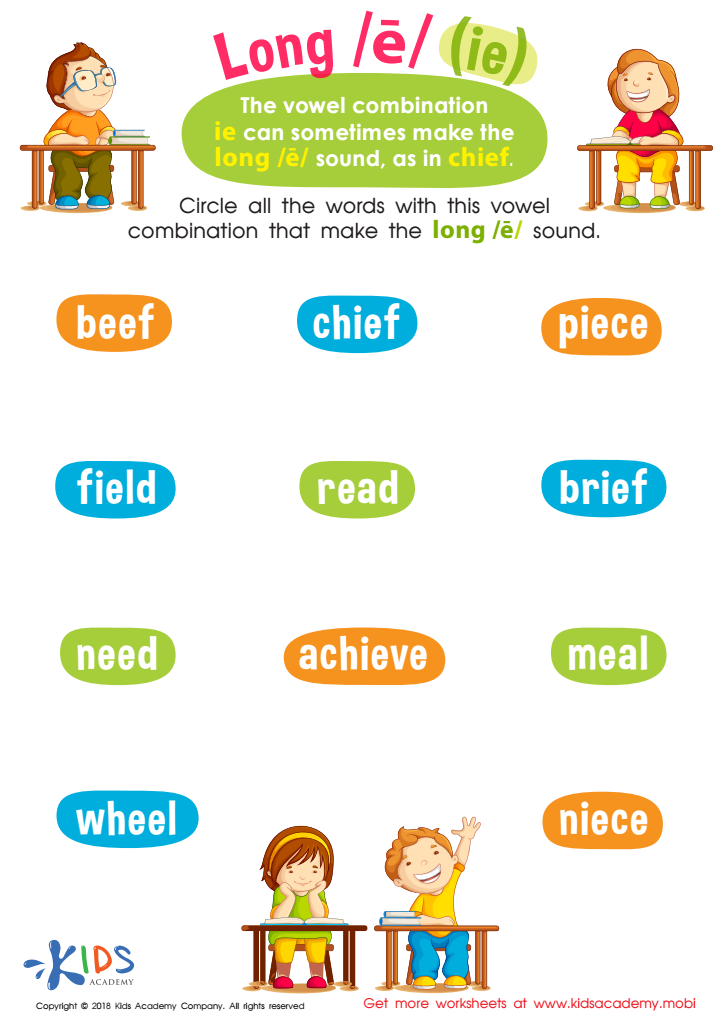

Reading: Long E and IE Worksheet


short vowels Worksheet
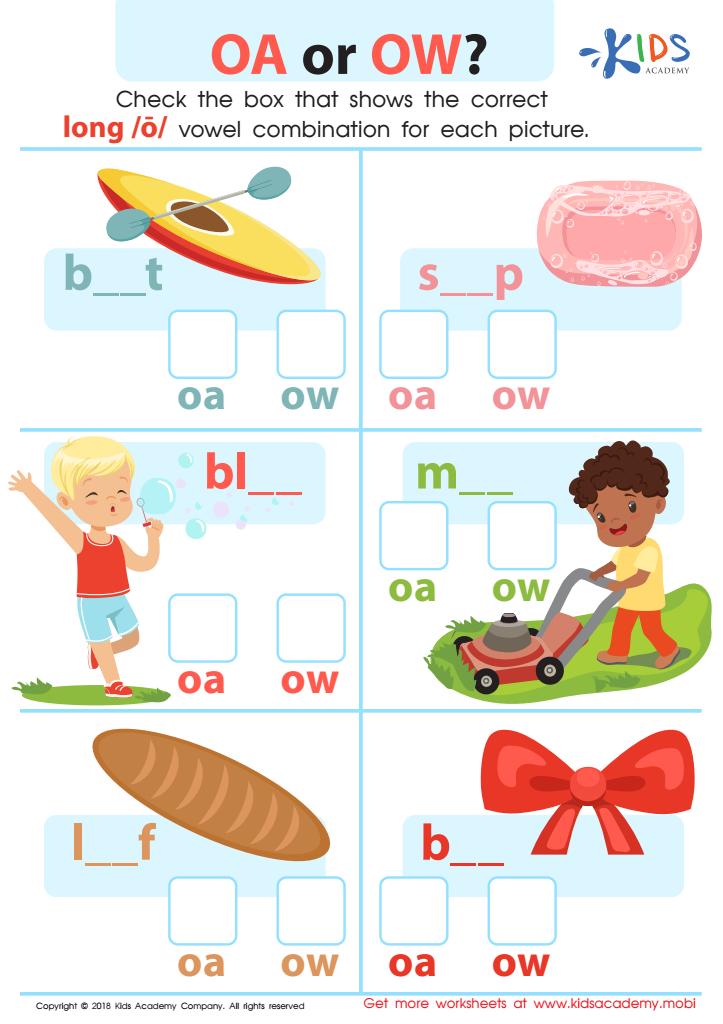

Reading: OA or OW Worksheet


Vowel Diphthongs OI OY Worksheet
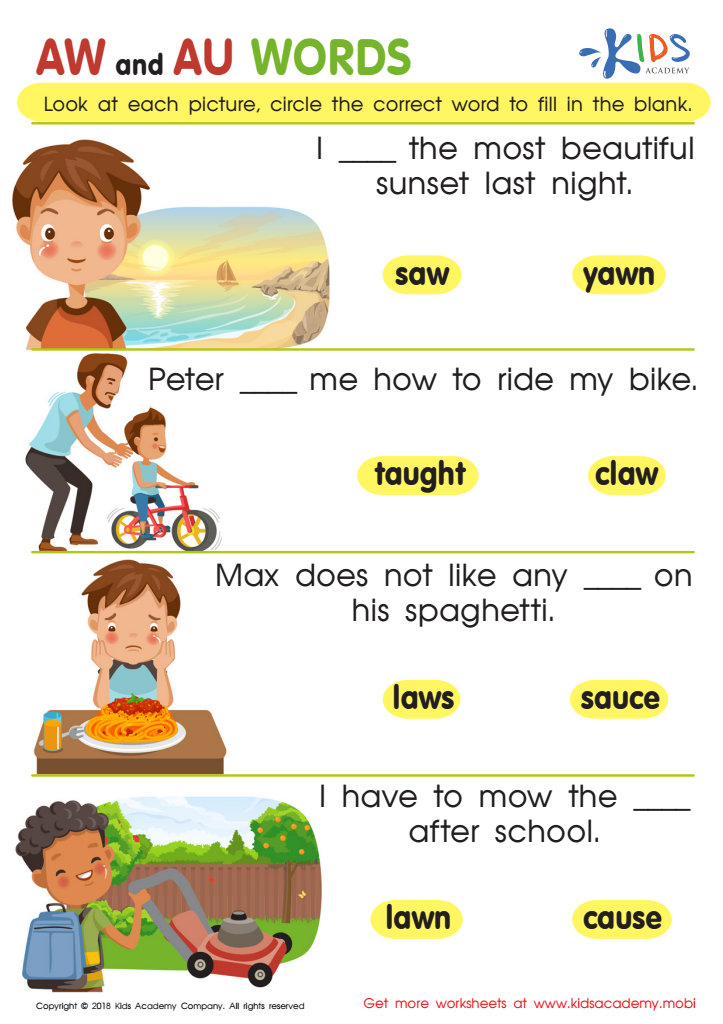

Reading: AW and AU Words Worksheet


Reading: EA as in Bread Worksheet


Long and Short E Worksheet
Reading comprehension is a foundational skill that shapes a child's educational journey, making it essential for parents and teachers to prioritize. Normal vowel blends are crucial in this developmental stage, particularly for children aged 3-8, as they enable early readers to decode words more effectively. Blends, which combine consonants with vowels to form sounds, help broaden a child’s vocabulary and enhance phonemic awareness, leading to a more fluent reading experience.
Focusing on normal vowel blends sharpen's a child’s ability to recognize patterns in words, paving the way for better comprehension. As children learn to read, they encounter a variety of texts—understanding these texts requires not only decoding the words but also making meaning from them. Enhanced reading comprehension translates to increased confidence and a lifelong love for reading.
Moreover, strong reading skills are linked to academic performance across subjects. When parents and teachers foster proficiency in vowel blends, they provide children with tools to tackle more complex texts as they advance. Thus, encouraging early mastery of reading comprehension through vowel blends is essential, as it lays a durable groundwork that will benefit children throughout their educational careers and beyond.
 Assign to My Students
Assign to My Students












